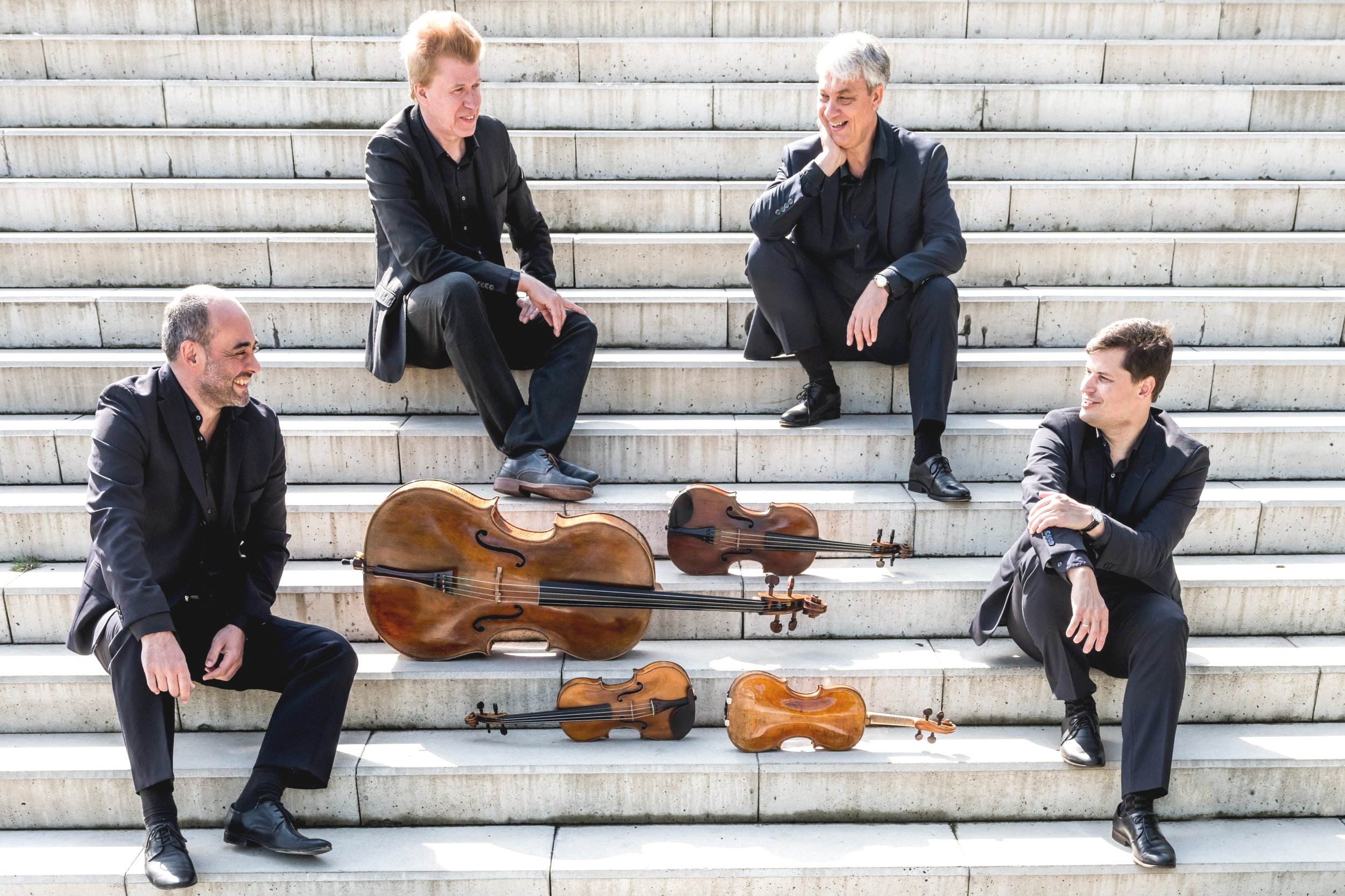October 23, 2022
Talich Quartet
Strings
Talich Quartet © Radek KalhousBiography
Jan Talich - violin
Roman Patočka - violin
Radim Sedmidubský - viola
Michal Kaňka - cello
For several decades, the Talich Quartet has been recognized internationally as one of Europe’s finest chamber ensembles, and as the embodiment of the great Czech musical tradition. The Quartet was founded in 1964 by Jan Talich, during his studies at the Prague Conservatory, and named for his uncle Václav Talich, the renowned chief conductor of the Czech Philharmonic. During the 1990s, there was a gradual and complete change in personnel, rejuvenating the Quartet while continuing the tradition of its predecessors. Jan Talich Jr., the current first violinist, is the son of the Quartet’s founder. Specializing in works by Czech composers, the Quartet has won several Grand Prix du Disque awards. The group is regularly invited to prestigious chamber music festivals such as the Pablo Casals Festival in Prades, the Prague Spring Music Festival, Printemps des Arts in Monte Carlo, the Tibor Varga Festival of Music, and the International String Quartet Festival in Ottawa. It regularly visits such venues as New York’s Carnegie Hall, London’s Wigmore Hall, and the Théâtre des Champs-Élysées and Salle Gaveau in Paris. Return LMMC engagement.
Notes
Johann Kalivoda is barely known today, but during the early nineteenth century he was held in high esteem as both a violinist and composer. He spent most of his career at the court of Prince Karl Egon II of Fürstenberg in Donaueschingen. The second of his three string quartets dates from 1836. The outstanding feature of the first movement is its insistent dactylic rhythmic pattern such as found also in the first movement of Beethoven’s Seventh Symphony. The second movement is a Scherzo and Trio, the third a heartfelt Adagio in which the first violin assumes the role of an operatic star. The final Vivace movement again features the first violin, but whose “thunder” is soon preempted by the second violin playing the movement’s only melodic material.
Very few chamber music works owe their inspiration to extramusical sources. Janáček’s String Quartet No. 1 is one of these. Tolstoy’s novella The Kreutzer Sonata (1889) is the story of a married woman caught in the dilemma between remaining faithful to a man who treats her cruelly and having an affair with a violinist who adores her. The violinist, ironically, was introduced to the woman by her husband at a soirée during which Beethoven’s Kreutzer Sonata was performed. One might assign specific themes to characters or moods, if one wishes, but it is the overall sense of theater that makes Janáček’s quartet such a compelling work. Not one of its four movements is in sonata form. Instead, motifs and rhythmic devices are presented, repeated, juxtaposed and combined in constantly changing tempos and meters.
If the six Op. 18 quartets showed Beethoven paying tribute to the musical world he had inherited from Haydn and Mozart, the three Op. 59 quartets, written six years later, reveal him as a totally individualistic, fully mature artist determined to say exactly what he wanted and how. The first movement of Op. 59 No. 2 is a marvel of compact integration of harmony and melody, of motivic development, and of musical drama. Inspiration for the slow movement supposedly came from Beethoven’s contemplation of the night sky and music of the spheres. The third movement is notable for its rhythmic quirkiness, while the final movement is one of Beethoven’s most jubilant and exuberant.
Robert Markow
Programme
KALIVODA String Quartet No. 2 in A major,
(1801 - 1866) Opus 62 (1836)
JANÁČEK String Quartet No. 1 (1923)
(1854 - 1928) 'Kreutzer Sonata'
BEETHOVEN String Quartet in E minor,
(1770 - 1827) Opus 59, No. 2 (1808)
-
Downloads
-
Next Concert
Rachel Barton Pine, violin
November 13, 2022 at 3:30 p.m.

